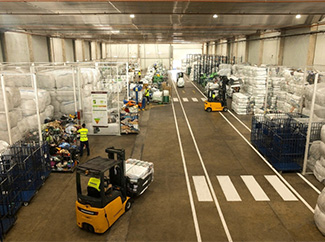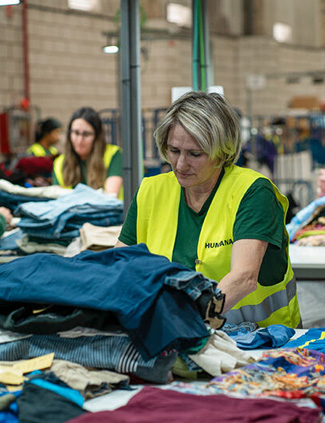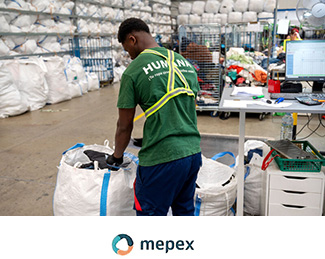consent_cookie
Duración: 1 year
Stores the user's cookie consent state
25-09-2024
For the second consecutive year, Humana Fundación Pueblo para Pueblo has obtained the Mepex certificate that accredits the traceability of the textile waste processed in its preparation plants for reuse in Madrid and Barcelona.
The Textile Transparency Report (TTR) that accompanies this certificate confirms that 63.5% of the textile waste processed by Humana is reused as second-hand products, either in Spain or globally. A result that faithfully exemplifies the organization's will to pursue reuse, faithful to the Waste Hierarchy of the European Union.
It is probably the only entity in Spain and one of the few in Europe that has a TTR certificate of this nature. "The used textile management sector is a young sector that still has a long way to go in terms of traceability and control of its value chain. In the near future we will see the development of this type of certification," says Rafael Mas, director of Projects and External Relations at Humana Fundación Pueblo para Pueblo.
“We were pioneers in the selective collection of textiles with containers, and we are aware of our commitment to society when it comes to clearly explaining what we do with clothing,” says Mas, “transparency in what we do is a key issue for our entity, our collaborators can rest assured.”
Expert consultant in circular economy and waste
Mepex Consult AS, a Norwegian consultancy specialising in circular economy and waste, began preparing TTR reports for organisations and companies in the textile recovery and reuse sector in 2016.
The methodology followed by Mepex includes verification that the quantities of textiles processed in their different flows (local reuse, global reuse, recycling, energy recovery and final disposal) are equal to the quantities that the specialised operators receiving this textile receive and market as such, according to the information provided by them to the consultancy itself. “It is the only guarantee that textile products are reused, given that there is a third party that pays for it in order to market it as clothing products,” explains Rafael Mas.
Final destination of processed garments
The final destination of the garments classified in the preparation plants for reuse is as follows:
Traceability of the value chain
The information collected by Mepex is recorded in its database with the purpose of establishing an annual history that reflects possible inconsistencies in the quantitative and qualitative analyses carried out. “Traceability in the value chain is a crucial aspect to promote sustainability, resource efficiency, quality assurance, ethical practices and consumer empowerment within the textile industry,” states the report by Mepex Consult AS, a consultancy with more than 35 years of experience in circular economy and waste.
“This example of good practices at the level of textile management accentuates the reliability of Humana as a manager that places reuse at the center of its business model,” insists the Humana spokesman.


